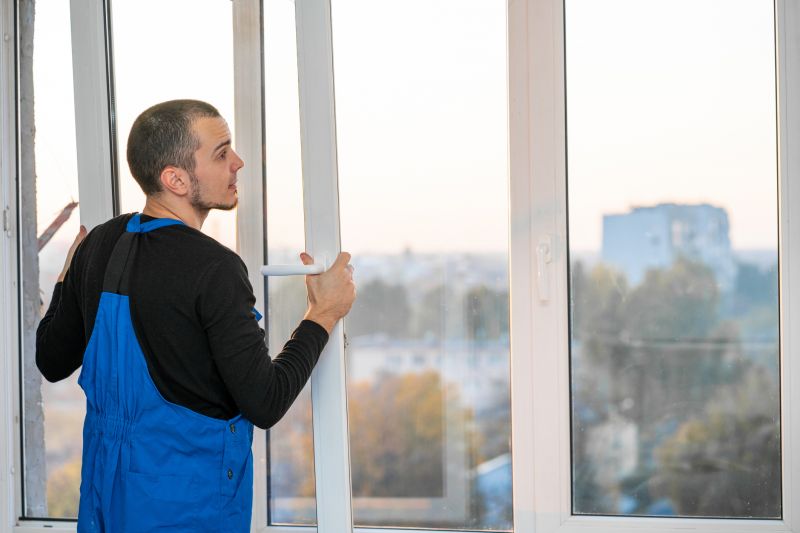Favorite Home Window Replacement Products for Simple and Effective Upgrades
Explore popular and reliable window options that make upgrading your home's windows straightforward and satisfying.
 Replacing home windows is a significant project that can influence the comfort, energy efficiency, and aesthetic appeal of a residence. When considering window replacements, homeowners have a variety of options tailored to different needs, styles, and budgets. From traditional designs to modern innovations, the selection process involves evaluating factors such as material durability, insulation properties, ease of installation, and maintenance requirements. Understanding these aspects can help in making informed decisions that align with both functional needs and personal preferences.
Replacing home windows is a significant project that can influence the comfort, energy efficiency, and aesthetic appeal of a residence. When considering window replacements, homeowners have a variety of options tailored to different needs, styles, and budgets. From traditional designs to modern innovations, the selection process involves evaluating factors such as material durability, insulation properties, ease of installation, and maintenance requirements. Understanding these aspects can help in making informed decisions that align with both functional needs and personal preferences.
Types of Products For Home Window Replacements
Double-Hung Windows
Traditional windows with two sashes that slide vertically, allowing for versatile ventilation and easy cleaning.
Casement Windows
Hinged windows that open outward like a door, providing excellent ventilation and unobstructed views.
Sliding Windows
Horizontal sliding windows that are easy to operate and ideal for wide openings.
Fixed Windows
Non-operable windows primarily used for letting in light and enhancing views.
Awning Windows
Hinged at the top, these windows open outward from the bottom, suitable for ventilation even during rain.
Bay and Bow Windows
Extended window units that project outward, adding architectural interest and interior space.
Picture Windows
Large, fixed windows designed to maximize natural light and scenic views.
Skylight Windows
Installed in ceilings or roofs, skylights bring daylight into upper rooms or interior spaces.
Storm Windows
Additional panes installed over existing windows to improve insulation and protection.
Energy-Efficient Windows
Windows featuring advanced glass coatings and insulating frames to reduce energy transfer.
Custom Architectural Windows
Unique window shapes and designs tailored to specific architectural styles and preferences.
Fiberglass Windows
High-strength, low-maintenance windows made from fiberglass materials, offering durability and insulation.
Aluminum Windows
Lightweight and corrosion-resistant windows suitable for modern and commercial aesthetics.
Wood Windows
Classic and warm-looking options, often chosen for their aesthetic appeal and traditional charm.
Composite Windows
Windows made from a blend of materials designed to combine strength, low maintenance, and insulation.
Tilt and Turn Windows
Versatile windows that can tilt inward for ventilation or swing open like a door for cleaning.
Bay Windows
Protruding windows that extend outward, creating additional interior space and visual interest.
Garden Windows
Box-style windows that extend outward, often used for plants or decorative displays.
Popular Choices
A common choice for many homes, appreciated for their classic look and versatile operation.
Popular for their ease of use and suitability for wide openings in various rooms.
Favored for their unobstructed views and excellent ventilation capabilities.
Often selected to maximize natural light and scenic views in living spaces.
Chosen for their architectural appeal and ability to add space and light.
Increasingly popular due to their potential to improve home insulation and reduce energy costs.
Growing in popularity for their flexibility and ease of cleaning.
Valued for their durability and low maintenance requirements.
Often chosen for modern designs and their resistance to corrosion.
Still favored for their aesthetic warmth and traditional charm.
Popular as an added layer of insulation and protection for existing windows.
Increasingly used to bring daylight into interior spaces and upper floors.
Selected for unique design needs and architectural accents.
Chosen for their strength and low maintenance over traditional materials.
Popular for kitchens and sunrooms, offering space for plants and decorative displays.
Modern window replacement products come in an array of styles, including double-hung, casement, sliding, and fixed windows. Each type offers unique advantages in terms of ventilation, ease of operation, and visual appeal. Materials such as vinyl, wood, aluminum, and composite options are available, each with its own set of benefits and considerations regarding longevity and upkeep. Additionally, features like multi-pane glass, low-emissivity coatings, and specialized hardware can enhance the performance and appearance of new windows.
Installation quality is crucial for optimal performance and longevity of window replacements. Professional installation ensures proper sealing, insulation, and alignment, reducing the risk of drafts, leaks, and other issues. For DIY enthusiasts, there are also products designed for easier installation, accompanied by detailed instructions and support resources. Ultimately, selecting the right window replacement products involves balancing aesthetic preferences with practical features to achieve a harmonious and functional home environment.
Key Buying Considerations
- Material durability and maintenance requirements
- Energy efficiency features and glass coatings
- Compatibility with existing window openings and architectural style
- Ease of operation and hardware quality
- Insulation properties to reduce drafts and heat transfer
- Security features such as locks and reinforced frames
- Ventilation options and airflow control
- Aesthetic appeal and compatibility with home design
- Ease of installation, whether DIY or professional
- Cost and overall budget constraints
- Warranty and support from manufacturers
- Availability of customization options in size and style
- Weather resistance and protection against elements
- Impact resistance for areas prone to storms or debris
- Environmental factors that may influence material choice
